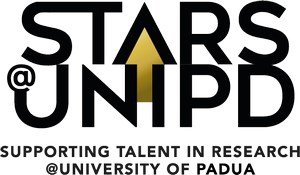
STARS Grantee: Vincenzo Amendola
 Project: 4NANOMED
Project: 4NANOMED

Department: Chemical Sciences
Total Contribution: Euro 140.000
Call: STARS-2017-CoG
Project Duration in months: 24
Start Date: 15/03/2018
End Date: 14/03/2020
4NANOMED - 4-D nanomedicine based on biodegradable and biocompatible nanoalloys
Nanomedicine has the potential to revolutionize many of the current clinical procedures for treatment and diagnosis, particularly in the oncology field, through the use of nanoparticles. However, the limiting factor is inherent in the "Nanomedicine dilemma": nanoparticles either arrive effectively in the tumor, but also accumulate in other organs indefinitely, or are eliminated from the body in a short time, forcing the administration of high doses that increase the likelihood of side effects.
In the 4NANOMED project, nanomedicines have been developed that behave in an ideal way, that is as "four-dimensional" (4-D) compounds capable of reducing their size only after use to be quickly eliminated without compromising the diagnostic and / or therapeutic functions and without requiring dangerous overdoses. The operating principle and the preparation methodology recall the example of comets, whose destiny is to gradually evaporate until they disappear. Now imagine that you must capture a comet: the "comet hunter" should be very fast and still could not keep its prey very long before it spontaneously disintegrates.
In the case of 4-D nanomedicines, the "comets" are nanometric and are composed of chemical elements that are not very compatible with each other, so that they tend to separate in space. Before that happens, however, the chemical elements are trapped in what is called a non-equilibrium metal alloy nanoparticle. Therefore, the three-dimensional shape of the nanoparticle, as well as its chemical composition, evolve along a fourth dimension which is time, at times compatible with use in nanomedicine.
The results have been published in various journals, also from the Nature Index list, and an international patent application has been filed to protect the synthetic conditions, the composition of the nanalloys and the intended applications. The results published on the Au-Fe particles were taken from various Italian and international scientific dissemination sites such as Le Scienze, Tecnomedicina, Zephyrnet, Yahoo news, ImpactsCool, NanoWerk, Science X, AzoNano and StatNano.


